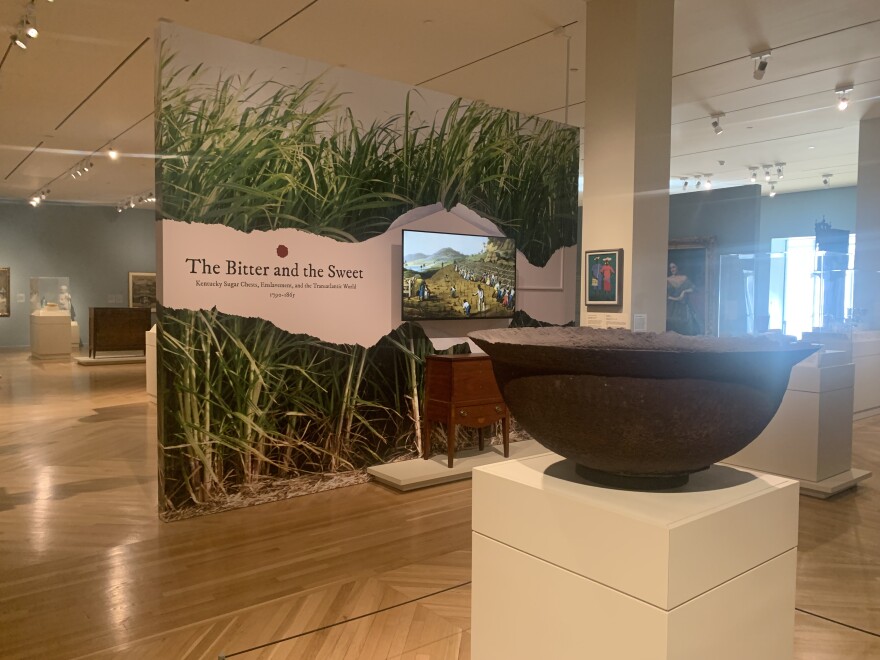Sugar chests were popular in the region from 1790 - 1865 as a means to keep large quantities of sugar preserved.
“An elaborate sugar chest would have been displayed in a Kentucky dining room or a parlor to kind of convey a wealthy economic status of the owner of the sugar chest and also to facilitate social rituals,” explained Terra Foundation assistant curator Jennifer Downs.
The chests are symbolic of Kentucky’s role in the history of enslavement in the United States, especially as sugar cane plantations moved from the West Indies to places like Louisiana.
“[Kentucky was] very complicit in not only enslaving people but involved in the trafficking of enslaved people down the river as well and sugar coming back up the river to Kentucky,” said Downs.
Louisville was a hub for enslaved human trafficking. The phrase“sold down the river” refers directly to the Mississippi and Ohio Rivers.
The exhibition in the museum’s Kentucky Gallery features sugar chests from the 19th century, tools used by enslaved people in the production of sugar and contemporary pieces that speak to the enduring legacy of enslavement.

The work of creating sugar was grueling, from cutting down the sugar cane to the crystallization process. One particularly dangerous task was transferring boiling cane juice from one kettle to another to allow water to evaporate off. The vessels were often heated over open flames and produced lots of steam that could easily burn the enslaved people charged with the task.
Downs said a lot of that history has been sanitized and romanticized.
“I think a lot of that story has just not been brought forth,” said Downs. “I think a lot of people that I've spoken with, coming through the exhibition they're very aware of, of the history of sugar, trade and production. Many are not.”
Downs said the exhibition speaks to an ongoing difficulty in the commonwealth to confront the state’s history with enslavement.
“Kentucky didn't secede from the Union. We have maybe a different history, but definitely a long history of enslavement,” she explained. “It's a very intertwined and brutal history.”
Downs hopes that people who walk through the exhibition leave with a better understanding of the way history and art work in conjunction with one another. As well as a stronger ability to not see objects on display as simply static items with one-dimensional context.
“We're really taking a deeper dive and hoping people will come away… a deeper understanding of something that's been in the Kentucky kind of lexicon or in our consciousness,” Downs said.
The Bitter and the Sweet: Kentucky Sugar Chests, Enslavement, and the Transatlantic World 1790-1865 is open through April 7. The museum is free to visit on Sundays through the end of 2024.
Copyright 2023 Louisville Public Media. To see more, visit Louisville Public Media. 9(MDAxODQ3NzExMDEyMTczNzkxNDU5MmE1Yg004))




